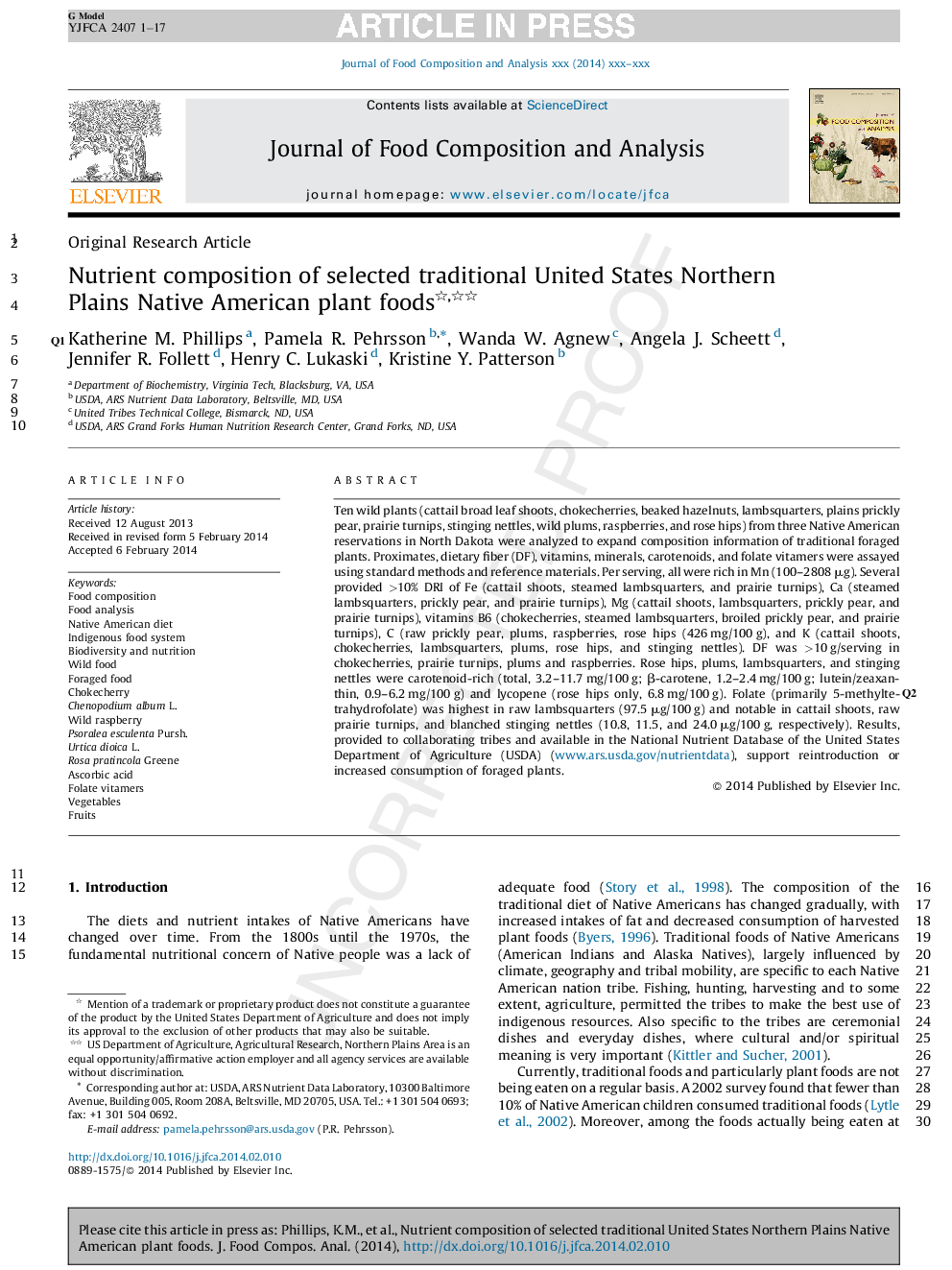| Article ID | Journal | Published Year | Pages | File Type |
|---|---|---|---|---|
| 10552726 | Journal of Food Composition and Analysis | 2014 | 17 Pages |
Abstract
Ten wild plants (cattail broad leaf shoots, chokecherries, beaked hazelnuts, lambsquarters, plains prickly pear, prairie turnips, stinging nettles, wild plums, raspberries, and rose hips) from three Native American reservations in North Dakota were analyzed to expand composition information of traditional foraged plants. Proximates, dietary fiber (DF), vitamins, minerals, carotenoids, and folate vitamers were assayed using standard methods and reference materials. Per serving, all were rich in Mn (100-2808 μg). Several provided >10% DRI of Fe (cattail shoots, steamed lambsquarters, and prairie turnips), Ca (steamed lambsquarters, prickly pear, and prairie turnips), Mg (cattail shoots, lambsquarters, prickly pear, and prairie turnips), vitamins B6 (chokecherries, steamed lambsquarters, broiled prickly pear, and prairie turnips), C (raw prickly pear, plums, raspberries, rose hips (426 mg/100 g), and K (cattail shoots, chokecherries, lambsquarters, plums, rose hips, and stinging nettles). DF was >10 g/serving in chokecherries, prairie turnips, plums and raspberries. Rose hips, plums, lambsquarters, and stinging nettles were carotenoid-rich (total, 3.2-11.7 mg/100 g; β-carotene, 1.2-2.4 mg/100 g; lutein/zeaxanthin, 0.9-6.2 mg/100 g) and lycopene (rose hips only, 6.8 mg/100 g). Folate (primarily 5-methyltetrahydrofolate) was highest in raw lambsquarters (97.5 μg/100 g) and notable in cattail shoots, raw prairie turnips, and blanched stinging nettles (10.8, 11.5, and 24.0 μg/100 g, respectively). Results, provided to collaborating tribes and available in the National Nutrient Database of the United States Department of Agriculture (USDA) (www.ars.usda.gov/nutrientdata), support reintroduction or increased consumption of foraged plants.
Keywords
Related Topics
Physical Sciences and Engineering
Chemistry
Analytical Chemistry
Authors
Katherine M. Phillips, Pamela R. Pehrsson, Wanda W. Agnew, Angela J. Scheett, Jennifer R. Follett, Henry C. Lukaski, Kristine Y. Patterson,
